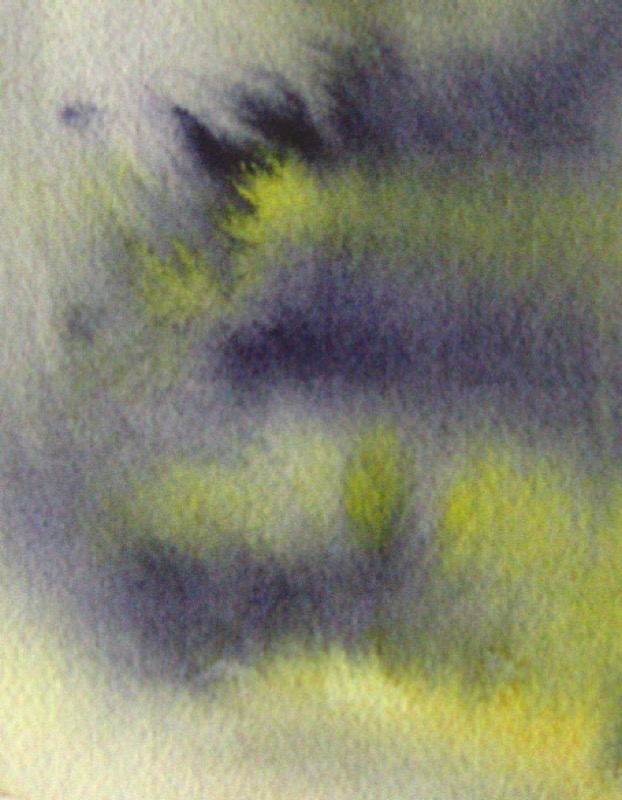You can also use bleeding to create pretty effects, such as a stormy sky or light reflecting on water.
What you need to know:
- So long as the paper is wet all over, there's no risk of bleeding. It occurs when excess water is placed on an otherwise dry section of paper. Result: the color runs, creating a blotch with sharp, very pigmented edges (scalloping), leaving a very light color on the inside.
- The drier the paper, the stronger the scalloping, and the more transparent the inside of the blotch.

